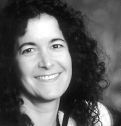| | Naturopathic Medicine: Osteoporosis | |
Osteoporosis, which means "porous bone," is a bone-thinning disease
that has affected over 200 million people worldwide. It has been called
the "silent disease" because it comes on with few or no warning
signs. It is the major cause of fractures, particularly of the spine, hip,
ribs and wrist in older persons. Common symptoms include a loss of height,
a hunched back, and back pain. While the condition itself is not fatal,
it makes bones more susceptible to fractures and can make moving around
increasingly difficult. It is important to note that osteoporosis is NOT
merely a loss of calcium from the bone. That condition is called osteomalacia.
Osteoporotic bone is losing not only inorganic (calcium mineral) density
but organic bone matrix made up primarily of collagen and specific proteins.
The group at highest risk for osteoporosis may be characterized by the
post-menopausal, slender, small-boned, fair complexioned Caucasian woman.
Men are also at risk, but tend to have congenitally denser bone, and sustain
weight bearing exercise for longer periods. African American and Hispanic
populations are much less prone than Caucasians to loss of bone density
because they inherit, for the most part, a sturdier skeletal structure.
A woman's risk of osteoporosis greatly increases after menopause because
her production of the sex hormone estrogen dramatically drops off at her
peak of maturity. After 50 a woman clearly has other concerns than caring
for infants, and has no need to continue to maintain her endometrium for
the possibility of pregnancy. It so happens that reduced estrogen results
in diminished levels of active Vitamin D (crucial for calcium absorbtion)
and in increased calcium excretion. For this reason, many physicians choose
to routinely administer small doses of synthetic estrogen to menopausal
women. Although this seems logical, it is also well known that estrogen
ingestion bears many risks including increased incidence of breast, cervical
and ovarian cancer. Weight bearing exercise, such as walking for 30
minutes daily or an hour 3 times weekly, plus adequate nutrition which will
be discussed below, is far superior treatment, in this author's opinion,
to hormone therapy.
In addition, something that many physicians may have forgotten from biochemistry
or physiology classes is that adequate stomach acid (HCl) is mandatory for
calcium absorption. After the age of 40, when we no longer need to eat
as much, stomach hydrochloric acid drops off naturally. If you do supplement
with calcium, you may want to take a small glass of lukewarm or room temperature
water with the juice of a quarter lemon 20 minutes before each meal. And
please make sure to use a bioavailable form of calcium. Calcium citrate
is the state-of-the-art way to deliver calcium supplements. Calcium carbonate
(such as in TUMS) is very inefficient. "About 45% of the calcium is
absorbed from calcium citrate in patients with reduced stomach acid, compared
to 4% absorption from calcium carbonate." (Recker R., "Calcium
absorption and achlorhydria." New England Journal of Medicine, 1985,
313, pp 70-73)
Coffee, more than 2 ounces of alcohol daily, and smoking all deplete serum
calcium and are associated with an increased risk of developing osteoporosis.
(Heaney, R., "Nutritional factors and estrogen in age-related bone
loss." Clin. Invest. Med., 1981, 5, pp 147-155) One of the worst offenders
in osteoporosis is high-phosphate drinks such as soda pops. Serum phosphates
compete with calcium in the blood for cellular absorption. Other dietary
implications in osteoporosis are excessive protein (we rarely need more
than 2 ounces daily) and trace mineral deficiencies. Complex carbohydrates
turn out to be culprits, once again: After ingesting sugar, urine calcium
increases. Vegetarian diets are associated with a lower risk of osteoporosis
because they eat less dense protein (and no mammalian protein) and probably
consume less phosphorus and more bioavailable calcium from leafy green vegetables
and colorful fruits, particularly berries. (Thom J., Morris J., Bishop A.,
Blacklock NJ, "The influence of refined carbohydrate on urinary calcium
excretion," British Journal of Urology, 1978, 50, pp 459-464.) The
so-called "anthocyanadins" (a
class of dark blue and red, highly nutritious pigments found in berries)
have a remarkable ability to stabilize collagen, including that found in
bone matrix.
The best approach to preventing, and treating, osteoporosis is a comprehensive
plan that involves regular weight-bearing exercise, a good source of calcium
and Vitamin D (as well as magnesium, B6, folic acid, B12, Vitamin K and
trace minerals boron and strontium), botanical medicines for women with
estrogen deficiency or in menopause, and a vegetarian diet.
Great juicing sources of
Calcium:
alfalfa, comfrey leaves, dandelion leaves, nettle leaves, parsley, mustard
greens, red clover flowers, collard greens, kale, broccoli (best is lightly
steamed first), cooked garbanzo and soy beans.
Vitamin D:
Sunshine (not necessary to put through the hopper), alfalfa, watercress,
nettles.
Flavonoids (to stabilize collagen structures):
Blackberries, blueberries, cherries, raspberries, salmonberries.
If you suspect you may have, or be heading towards, osteoporosis, or know
someone who is concerned about the disease, please consult a medical professional.
The naturopathic physician or nutritionist will be the most skilled at
dietary counselling. To find the closest naturopathic physician or nutrionist
trained in biochemistry and physiology please call the American Association
of Naturopathic Physicians at (206) 326-1612.
References (other than those specifically indicated)
Wm McGarey, "Osteoporosis: The silent disease," Patient Care,
1988, 5, pp 191-194.
M Murray, J Pizzorno, "Encyclopedia of Natural Medicine," Prima
Publishing, Rocklin CA 95677.
 | A graduate of Bastyr University in Seattle, she completed both the Naturopathic and Acupuncture/Oriental Medicine programs. Her preceptor work (similar to residencies) took place in Seattle, West Virginia and China,......more |
|
|
Popular Related Articles/Areas
Popular & Related Products
Popular & Featured Events
Dimensions of Wellness
|
|